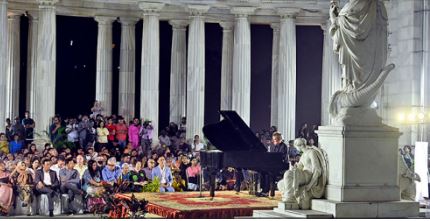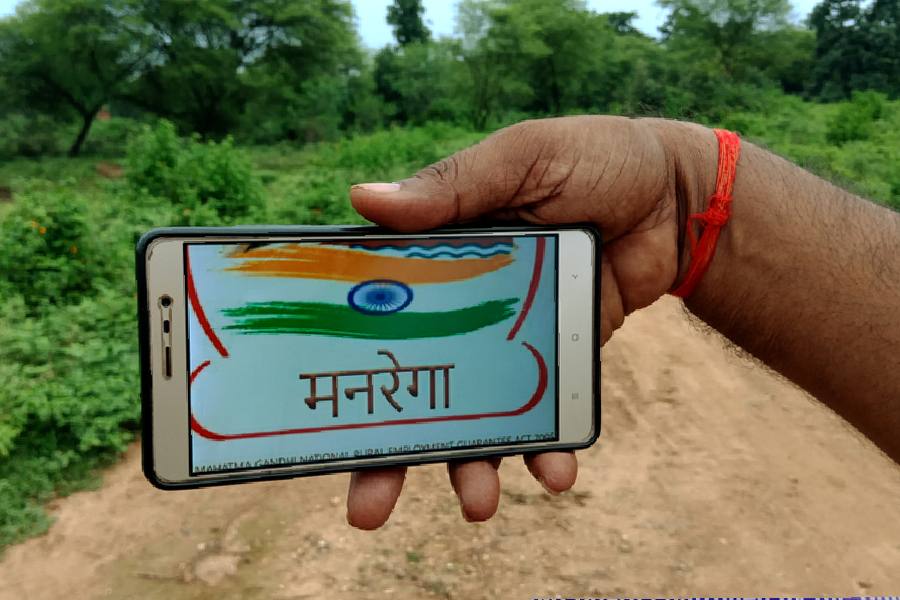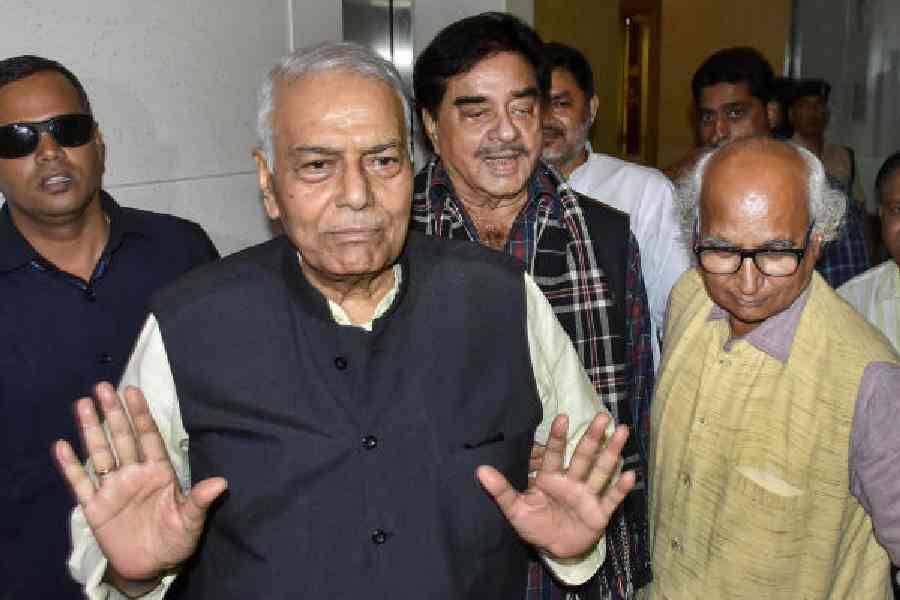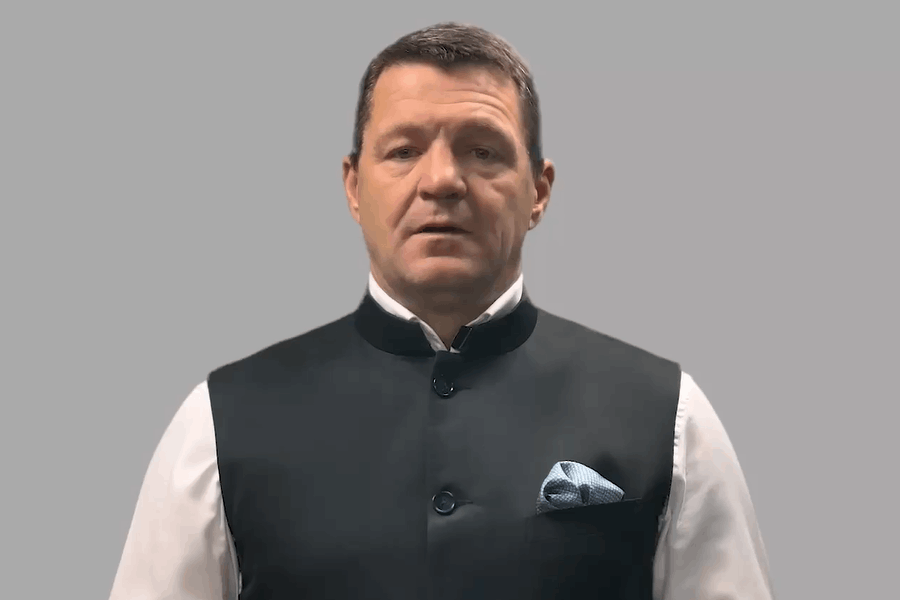The number of right-handed pianists around the world who can also play with only their left hand is so limited that they can be counted on a single finger. Maxime Zecchini is one of them.
The virtuoso pianist was on his second visit to India recently, this time on a three-city tour organised by Alliance Francaise du Bengale and Institut Francais. Calcutta was his second stop. At the concert at Victoria Memorial, he played John Barry’s Out of Africa and a suite on Juston Hurwitz’s La La Land as lefthand pieces.
Chatting with The Telegraph on the lawns of the French consulate general, Zecchini said he picked up the skill 20 years ago. “I have recorded 10 albums of the left-hand repertoire. There are about 1,000 pieces of music available for the left hand. I have recorded chamber music, concerto for piano orchestra, piano solos, contemporary music... to show that everything is possible with the left hand.”
Zecchini pointed out that it was possible to make out the difference if the same piece is played with both hands and only with the left hand. For the second, a transcription has to be done to make the piece suitable for a left-handed performance. “It requires a lot of creativity and astuteness to give a magical impression. With the use of the (sustain) pedal, it is possible to prolong each stroke with the resonance, and thus play two single notes as a double note. That would give the impression that both hands are playing,” he said.
The left-hand repertoire, he stressed, is “very difficult” to play. “Since it is necessary to give the impression that two hands are playing, there are a lot of fast movements which are difficult for debutant pianists,” he said, adding that the easiest piece for the left hand is Prelude of Scriabin Opus 9 No. 1.”
The urge to play left-handed was born of a desire to show off one’s talent. “In the 19th century, pianists played in salons with a lot of beautiful women in the audience. They wanted to impress them,” Zecchini laughed.
But one individual was behind a flurry of left-hand specific compositions. Paul Wittgenstein lost his right arm in World War I. “But he decided to continue his career as a pianist and since he had money, he asked the big composers of his time — Maurice Ravel, Benjamin Britten, Sergei Prokofiev and others — to write pieces especially for him.”
At the Calcutta concert, Zecchini played a Boston Grand Piano that was arranged by the Alliance Francaise du Bengale. “The test of the quality of a pianist is being able to change his piano and still perform in the top class. It is normal for us to change a piano regularly. (We are) not like a violinist or a cellist, always playing with the same instrument. It is a challenge to give the best with the new instrument.”
Zecchini is the first in his family to take up music as a profession. “It was an adventure for my parents and my family. But they have always been encouraging.”
Now he lives away from the residential hub, close to Disneyland, to the east of Paris, like several other musicians. “Musicians need a house in the periphery. It is not possible for us to have neighbours. We practise every day for four or five hours. There is nature all around. It is very inspiring,” he said.
During his 2016 trip, he had played at the Calcutta School of Music. This time the venue was the eastern quadrangle of the Victoria Memorial, an open-air setting. “It is emotional to participate in a beautiful place. The connection between historical music and a historical place is interesting for the public and pleasant for the artiste.”
Zecchini’s playlist for the city included Westside Story (Leonard Bernstein), The Umbrellas of Cherbourg (Michel Legrand), Clair de Lune (Claude Debussy) and famous songs of Edith Piaf like La vie en rose, Je ne regrette rien and L’Hymne a l’amour. But it was his last three pieces, Ek ladki bheegi bhagi si, Kal ho naa ho and Purano shei diner katha, that earned him the biggest applause.
“I am very open when I play. I ask organisers what is popular in local music and if the score is simple, I ameliorate. A magical moment is created when the audience recognises the local piece from the first few notes I hit,” he smiled.

The recital underway at Victoria Memorial










